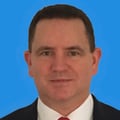Neil is Principal Product Manager for Event Management and Automation at OpsRamp. He is a seasoned IT Operations Management veteran with nearly 30 years experience at large enterprises. He discusses the evolution of this critical infrastructure management software market.
OpsRamp: ITOM software is a large sector with over 15 categories as analyzed by Gartner and with at least 25 acquisitions in 2019. In this crowded space, how can buyers navigate?
NP: It depends on where enterprises are making their key investments and what their priorities are in the marketplace. An organization may have its top priority as improving customer experience. Another company might need to focus first on managing the resiliency of a complex hybrid cloud infrastructure. The starting point for any major ITOM initiative, however, is to ensure that key revenue generating applications are working correctly all the time and prevent issues from resurfacing with AIOps and automation.
OpsRamp: As a whole, how do you see the industry evolving over the next 12 months? Might there be some disruption and consolidation given this challenging global economy?
NP: I believe there will be several major acquisitions as vendors seek to come out stronger following the coronavirus crisis. Many smaller vendors will likely disappear altogether unless they have strong balance sheets and funding models in place to ride out the storm. However, I don’t see all of these point tools going away anytime soon. Customers know that there is no single tool across all 15 ITOM categories that can do everything they need, and IT organizations are still somewhat siloed with infrastructure, network engineering, middleware, database and application support teams, and so on. So while a single pane of glass is always going to be the ultimate solution for many, it hasn’t been possible yet. Although Business Service Management (BSM) is consigned to the history books, with more open standards being introduced and better integration over RESTFul APIs for example, we are getting closer to it.
OpsRamp: In the area of IT infrastructure monitoring, what have been the most significant new requirements from enterprise and MSP customers in the past 12 to 18 months?
NP: As I mentioned earlier, preventing versus reacting to infrastructure related issues is where the focus needs to be. All of the innovation in DevOps, CI/CD, AIOps, Observability, FutureOps and NoOps is around trying to get smarter and prevent issues in the first place. Changes to application and infrastructure configurations still account for the majority of outages that occur daily. Monitoring for configuration drift, or “drift detection” is one way to prevent them through end-to-end infrastructure monitoring, event correlation and remediation capabilities. And, while infrastructure-as-code is the standard approach for site reliability engineers, we are also seeing the advent of monitoring-as-code. This is about deploying standard monitoring templates in a codified and controlled way and without the need to manually discover resources.
OpsRamp: How is the market meeting those demands and where are the gaps or failures?
NP: Vendors are now supporting open source projects for instrumentation (e.g. open tracing) like I’ve never seen before. This is only a positive thing as it leads to common standards. There is growing support among vendors for offering monitoring-as-code which will aid in early detection leading to the prevention of repeat issues. I long for the day when command center operators no longer have to sit in front of alert consoles because AIOps has truly delivered. Knowledge management is another area ripe for innovation. It’s always been seen as a rather dull and difficult topic but if you’re a senior executive who has just laid off thousands of people and the tribal knowledge has been lost, then knowledge management might be seen as a critical priority.
OpsRamp: What evidence are you seeing that a platform approach, in which one solution can integrate many of these point monitoring tools, is the best approach?
NP: Platforms are built for multi-tenancy and support multiple offerings versus point tools which are the exact opposite and are monolithic in nature. Modern platforms are designed as microservices and are API driven, which results in much easier integrations. In the case of OpsRamp, we offer customers a choice of offering based on their needs such as discovery and monitoring, IT incident management or remediation and automation.
OpsRamp: Do you think that DevOps and ITOps tools/practices are merging and if so how?
NP: I see a growing trend toward SRE practices as organizations focus on improving reliability of infrastructure and application stacks using configuration automation tools such as Ansible and Terraform. The rise of the SRE role continues to grow exponentially. Several months ago, the number of open SRE positions globally on LinkedIn was around 50,000. Even today with the current coronavirus pandemic there are still around 22,000 open SRE positions. This clearly indicates the importance enterprises place on reliability when managing complex hybrid cloud infrastructures.
OpsRamp: Any other relevant trends?
NP: I am starting to see closer alignment of robotic process automation, business process management and IT process automation into what Gartner refers to as hyperautomation. Edge computing and the need to prevent issues as close to the source as possible that is based on trained machine learning models will likely be a differentiator in the AIOps market. Choice of cloud providers is rising. IBM is betting its business on cloud and may disrupt dominant vendors in the market such as AWS, Microsoft or Google over time. IBM is a vendor to watch in the cloud space for sure. Monolithic platforms are being converted into microservices allowing a more modular and extensible architecture to meet the growing needs of customers. Intelligent automation will work its way into IT operations and become a standard operating model.
Next Steps
- How to achieve faster time to value with enterprise SaaS.
- Learn about the OpsRamp Platform.
- Learn about OpsRamp’s many integrations to third-party tools.






